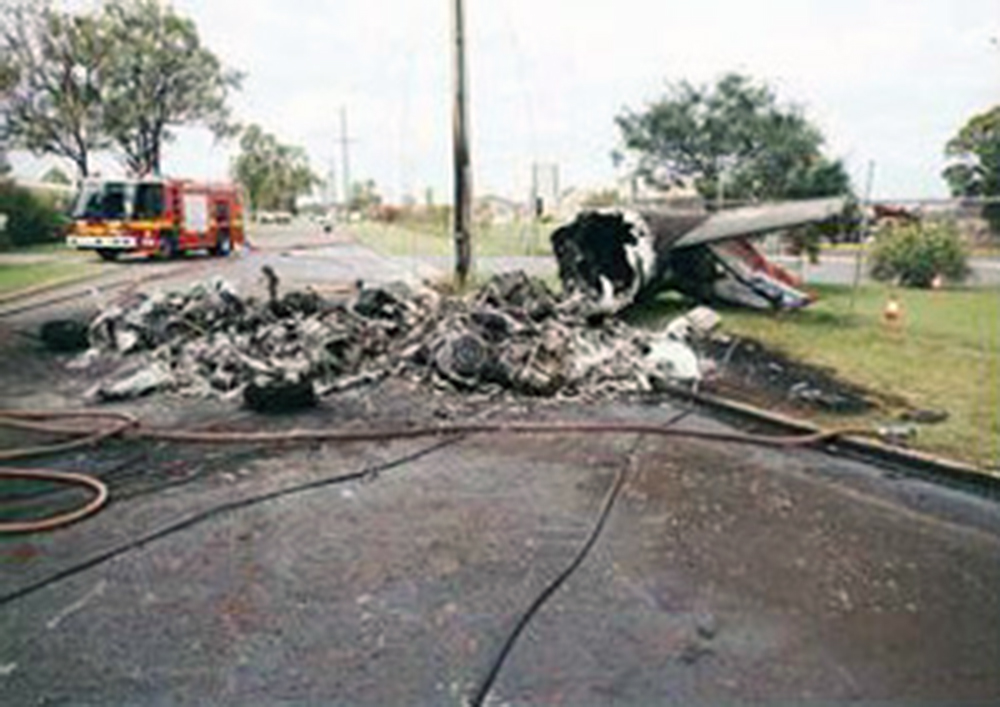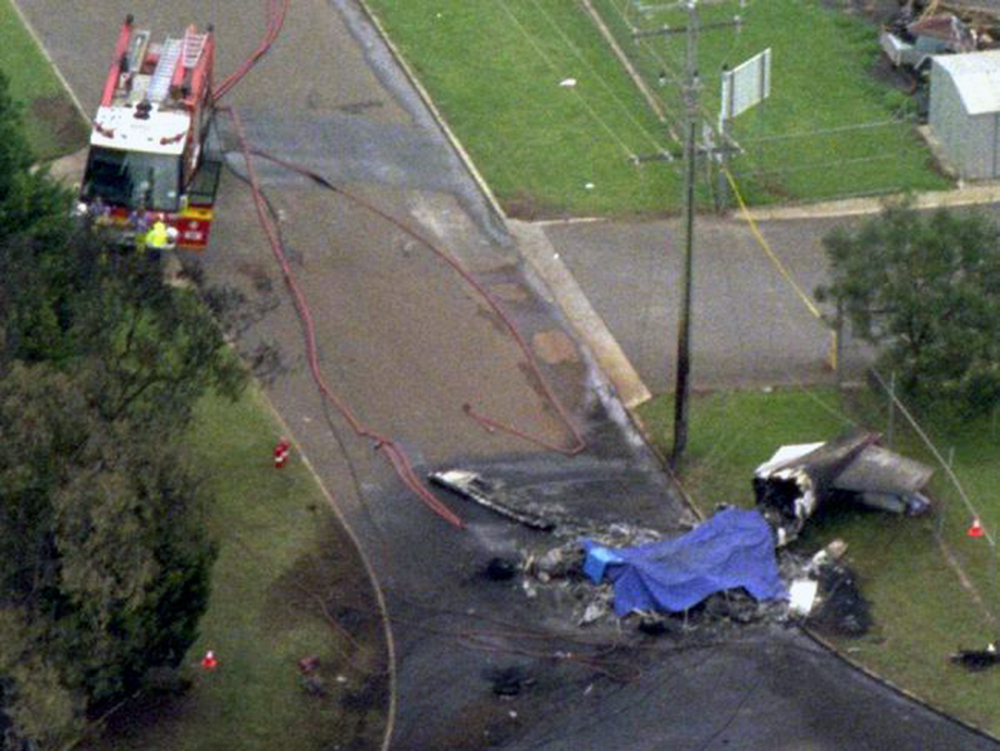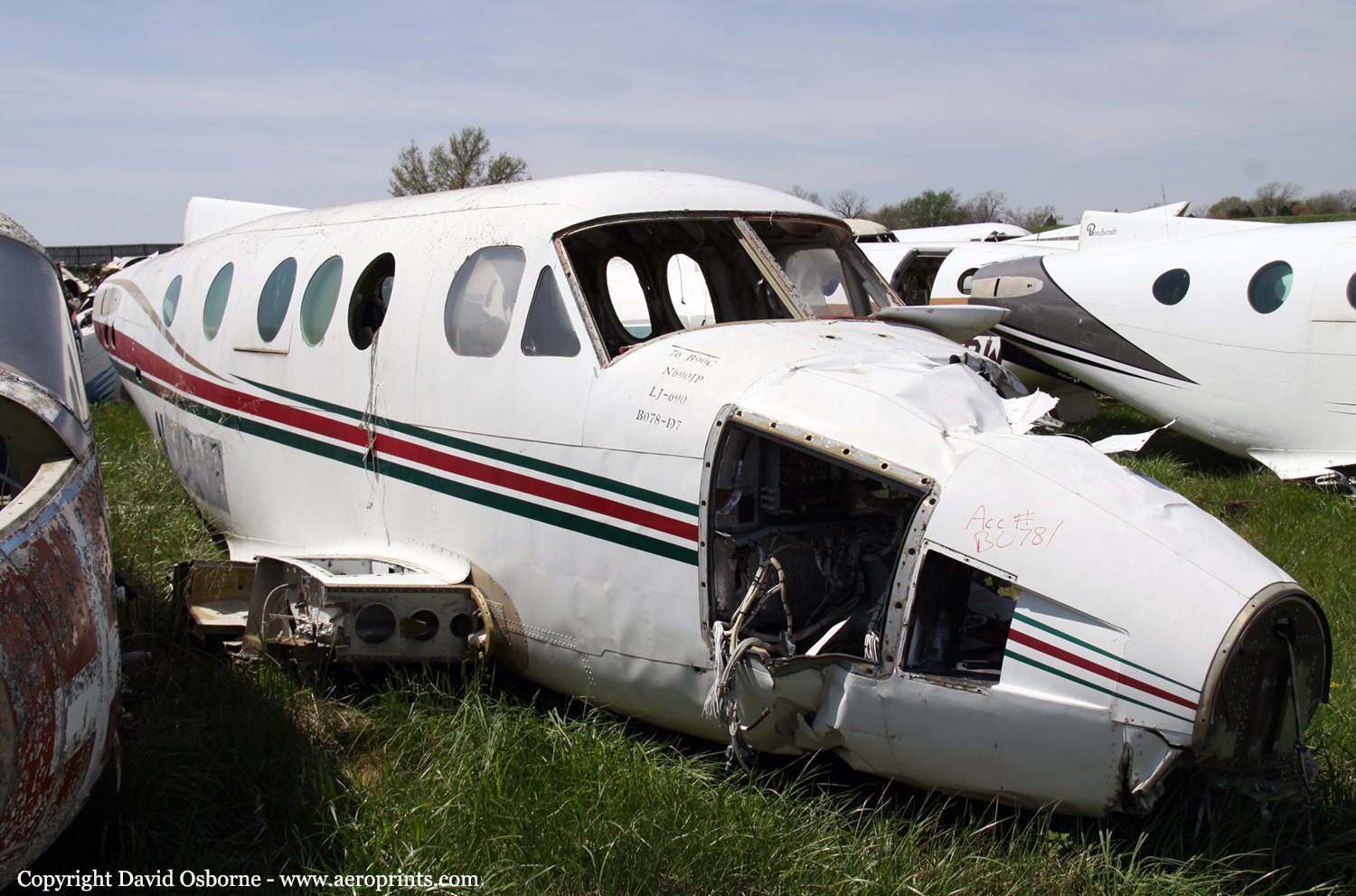Country
Crash of a Beechcraft C90 King Air in Cradock
Date & Time:
Dec 23, 2001 at 1630 LT
Registration:
ZS-INN
Survivors:
Yes
Schedule:
Port Elizabeth - Cradock
MSN:
LJ-523
YOM:
1971
Crew on board:
1
Crew fatalities:
Pax on board:
3
Pax fatalities:
Other fatalities:
Total fatalities:
0
Captain / Total hours on type:
118.00
Circumstances:
The private pilot was accompanied by his wife and his two daughters on a flight from Port Elizabeth to his farm in the Cradock district. On arrival at Cradock, the pilot apparently over-flew the runway for inspection and was on the downwind leg when the aircraft started to roll and yaw to the left. All engine indications were normal and the pilot had to decrease power on the right-hand engine in order to maintain control of the aircraft. With the reduction in power of the right-hand engine, the pilot was unable to maintain height and executed a forced landing on an open field. The aircraft was extensively damaged during the forced landing but no injuries were sustained. An on-site investigation was carried out on 24 December 2000 after which the aircraft was recovered to Lanseria aerodrome for further inspection. On inspection of the Left-hand propeller it was noted that the carbon block of the low pitch proximity sensor, which normally runs inside the Low-Pitch stop collar, was bent down at an angle, which would have rendered the secondary Low-Pitch stop inoperative. Due to the fact that the aircraft sustained damage to it's electronic circuitry it was not possible to verify the proper operation of the propeller pitch control system.
Probable cause:
Due to damage sustained during the accident, the proper operation of the propeller pitch control system could not be verified. The cause of the accident therefore remains undetermined.
Crash of a Beechcraft C90 King Air in Toowoomba: 4 killed
Date & Time:
Nov 27, 2001 at 0837 LT
Registration:
VH-LQH
Survivors:
No
Schedule:
Toowoomba – Goondiwindi
MSN:
LJ-644
YOM:
1975
Crew on board:
1
Crew fatalities:
Pax on board:
3
Pax fatalities:
Other fatalities:
Total fatalities:
4
Captain / Total hours on type:
385.00
Aircraft flight hours:
6931
Circumstances:
On 25 June 2004, the Australian Transport Safety Bureau released its final investigation report into an accident which occurred on 27 November 2001 at Toowoomba aerodrome, Qld, involving a Beech Aircraft Corporation King Air C90 aircraft, registered VH-LQH, which experienced an engine failure shortly after takeoff. The aircraft was destroyed and all four occupants sustained fatal injuries.
Probable cause:
In light of a further review of the evidence, the ATSB has reconsidered its original finding that the initiating event of the engine failure of VH-LQH was a blade release in the compressor turbine and proposes that an alternative possibility could have been that the initiating event occurred in the power turbine. Notwithstanding this possibility, in either scenario, the remainder of the findings and safety recommendations contained in the original ATSB report are still relevant.
Final Report:


Crash of a Beechcraft C90 King Air in Dallas
Date & Time:
Oct 9, 2001 at 1322 LT
Registration:
N690JP
Survivors:
Yes
Schedule:
Taos - Dallas
MSN:
LJ-690
YOM:
1976
Crew on board:
1
Crew fatalities:
Pax on board:
0
Pax fatalities:
Other fatalities:
Total fatalities:
0
Captain / Total hours on type:
100.00
Aircraft flight hours:
2356
Circumstances:
The commercial pilot flew the airplane on a cross-country flight of at least 2 hours and 47 minutes before dropping of his passengers, and flew back for 2 hours and 7 minutes without refueling. The pilot reported that as the airplane turned onto final approach, the right engine began to surge. He reduced the power on the right engine and increased power on the left, but the airplane started to roll right so he elected to reduce the power on the left engine and land in an alley. Prior to impacting wires, the pilot retracted the landing gear and brought the condition levers to "cut-off." A witness observed the airplane prior to impact and noted that the "motor wasn't on." The airplane impacted power lines, a tree, a natural gas meter, two residences, and a fence. The fuel tanks were compromised during the impact sequence, and the fire department sprayed the area with fire retardant foam. A test of the water runoff revealed "negative results for petroleum risk." Examination of both engines' fuel lines between their respective firewalls and fuel heaters, and fuel pumps and fuel control units revealed that they were void of fuel.
Probable cause:
The pilot's failure to refuel the airplane, which resulted in fuel exhaustion and subsequent loss of dual engine power while on approach.
Final Report:

Crash of a Beechcraft C90 King Air near Mainpuri: 8 killed
Date & Time:
Sep 30, 2001 at 1331 LT
Registration:
VT-EFF
Survivors:
No
Schedule:
New Delhi - Kanpur
MSN:
LJ-705
YOM:
1977
Crew on board:
2
Crew fatalities:
Pax on board:
6
Pax fatalities:
Other fatalities:
Total fatalities:
8
Circumstances:
En route from New Delhi to Kanpur, the crew reported over Aligarh. Short of next reporting point Kadas, the aircraft was about 10 miles right of track for which the permission was obtained and the pilot requested for a direct routing to Kanpur. About 10 minutes later, at an altitude of 14,000 feet, while cruising in bad weather conditions, the twin engine aircraft entered an uncontrolled descent, partially disintegrated in the air and eventually crashed in an open field near Mainpuri. All eight occupants were killed.
Probable cause:
While in cruising altitude, the crew encountered severe updrafts while flying in thunderstorm activity. Following a possible abrupt and abnormal manoeuvre, the crew lost control of the airplane that entered a spiral dive, resulting in an in-flight break up due to aerodynamic overload, leading to a total loss of control followed with a heavy impact with the ground.
Final Report:
Crash of a Beechcraft C90 King Air in Fort Lauderdale: 1 killed
Date & Time:
Jun 13, 2001 at 2122 LT
Registration:
YV-2466P
Survivors:
Yes
Schedule:
Charallave – Fort Lauderdale
MSN:
LJ-591
YOM:
1973
Crew on board:
1
Crew fatalities:
Pax on board:
2
Pax fatalities:
Other fatalities:
Total fatalities:
1
Captain / Total hours on type:
1800.00
Aircraft flight hours:
8279
Circumstances:
The Venezuelan registered Beech King Air C90 departed Caracas, Venezuela's Óscar Machado Zuloaga International Airport at 1516 eastern daylight time with a pilot and two passengers aboard, and flew to Fort Lauderdale-Hollywood International Airport, Florida. The route of flight filed with air traffic control was: after departure, direct to Maiquetia, thence Amber Route-315 to Bimini, thence Bahama Route 57V to Fort Lauderdale. The {planned} flight level was 220, and the pilot stated that 7 hours 15 minutes of fuel was aboard. Immigration/customs general declaration papers found aboard the wreckage stated the flight's intended destination was Nassau, and the pilot's daughter stated he always stopped at Nassau for fuel on many previous trips. After 6 hours 6 minutes, the aircraft crashed into a highway abutment about 1,700 feet short of his intended landing runway at Fort Lauderdale with total accountable onboard fuel of 3 to 4 gallons. One passenger received fatal injuries, one passenger received serious injuries, and the pilot received serious injuries. Engine factory service center disassembly examination revealed that the engines and their components exhibited no evidence of any condition that would have precluded normal operation, precrash. No precrash abnormalities with the propellers, their respective components, or any other aircraft system component were noted. Type certification data sheets for the C90 state that the unusable fuel aboard is 24 lbs., (3.6 gallons of Jet-A fuel).
Probable cause:
The pilot's failure to properly plan fuel consumption and to perform an en route refueling, resulting in a total loss of engine power due to fuel exhaustion while on downwind leg for landing at eventual destination, causing an emergency descent and collision with a highway embankment.
Final Report:
Crash of a Beechcraft C90 King Air in Islip
Date & Time:
May 18, 2001 at 1725 LT
Registration:
N270TC
Survivors:
Yes
Schedule:
East Hampton - Ronkonkoma
MSN:
LJ-858
YOM:
1979
Crew on board:
2
Crew fatalities:
Pax on board:
0
Pax fatalities:
Other fatalities:
Total fatalities:
0
Captain / Total hours on type:
98.00
Copilot / Total hours on type:
114
Aircraft flight hours:
6581
Circumstances:
After about a 20 minute flight, while on final approach for landing, the airplane experienced a loss of engine power on both engines, and the pilot-in-command (PIC) performed a forced landing into trees about 1/2 mile from the airport. The left and right boost pumps and the left and right transfer pumps, were observed in the "OFF" position. According to the PIC, after he exited the airplane, he returned to the cockpit and "shut off the fuel panel. The fuel quantity indicator toggle switch was observed in the "TOTAL" position. Examination of the fuel system revealed both engine nacelle tanks, both wing center section tanks, and the right wing fuel tanks were not compromised. About 1 quart of fuel was drained from the left and right engine nacelle tanks, respectively. Less than a quart of fuel was drained from the right wing tanks. The left wing tanks were compromised during the accident; however there was and no evidence of a fuel spill. Examination of the left and right wing center tanks revealed approximately 27 gallons (approximately 181 lbs) of fuel present in each tank. Battery power was connected to the airplane, and when the fuel transfer pump switches were turned to the "ON" position, fuel was observed being pumped from the left and right wing center tanks to their respective nacelle tanks. The accident flight was the third flight of the day for the flight crew and airplane. According to a flight log located in the cockpit, the flight crew indicated 750 lbs of fuel remained at the time of the takeoff. According to the airplane flight manual (AFM),"Fuel for each engine is supplied from a nacelle tank and four interconnected wing tanks...The outboard wing tanks supply the center section wing tank by gravity flow. The nacelle tank draws its fuel supply from the center section tank. Since the center section tank is lower than the other wing tanks and the nacelle tank, the fuel is transferred to the nacelle tank by the fuel transfer pump in the low spot of the center section tank...." Additionally, with the transfer pumps inoperative, all wing fuel except 28 gallons from each wing will transfer to the nacelle tank through gravity feed.
Probable cause:
The pilot’s failure to activate the fuel transfer pumps in accordance with the checklist, which resulted in fuel exhaustion.
Final Report:




